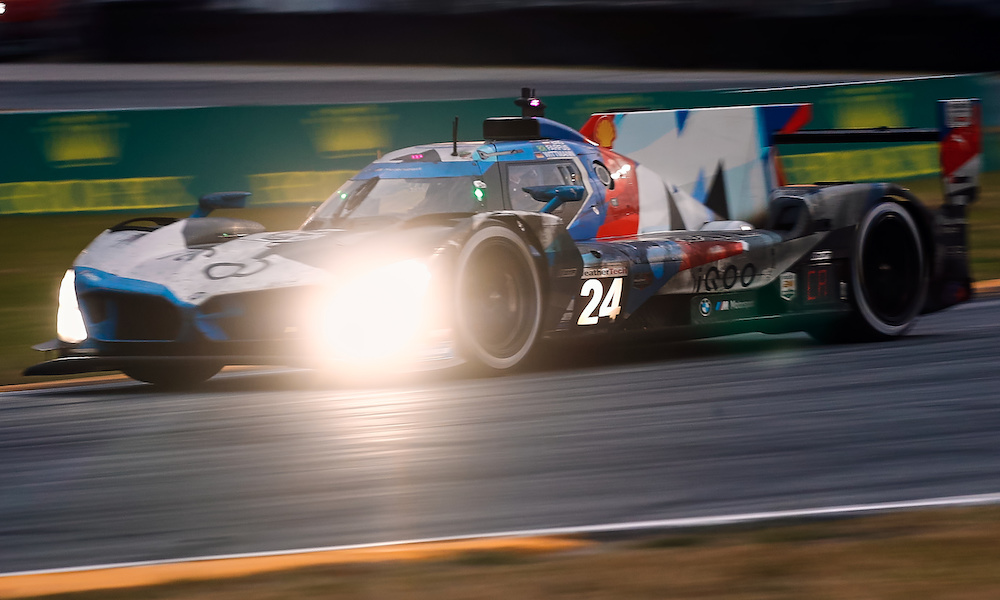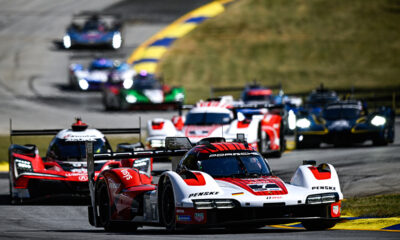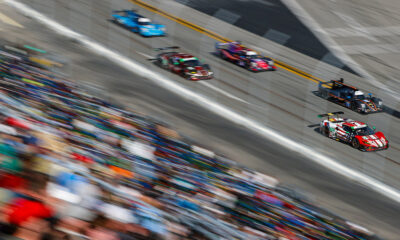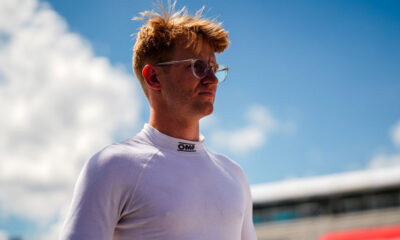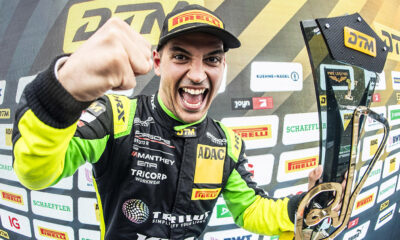The head of BMW M Motorsport described the Rolex 24 at Daytona as a “tough and difficult race” for the manufacturer’s new LMDh car but also viewed it as a “tick in the box” with regards to endurance mileage.
The No. 24 BMW M Hybrid V8 finished sixth overall, 15 laps down on the winning Acura ARX-06 from Meyer Shank Racing. The sister No. 25 BMW M Team RLL entry finished down in 49th after losing more than 130 laps due to a hybrid system issue early on.
Andreas Roos told Sportscar365 that BMW will analyze its reliability problems further but expressed satisfaction at the longest continuous run with the car to date.
“It was a tough and difficult race,” he said. “But to be honest, we expected that it would not be easy to start a new type of race car in a new era, directly with a 24-hour race.
“It would have been easier to start with a two- or three-hour race, but that’s how it is. In the end, we can be happy that both cars managed to see the checkered flag.
“One car had a long stop at the beginning when we lost a lot of time. But the other car managed quite well. It was, for a long time, in contention to maybe end up on the podium.
“If we are honest, some weeks ago we were [thinking], hopefully we have the cars here. Hopefully, they will run. At the end, we have a tick in the box because it’s our first endurance run that we more or less finished, and under real conditions.
“We gathered a lot of data which helped us a lot. And [it] will help us a lot in the further development. We never made a secret that we didn’t do the mileage we wanted in the preparation.
“This is why we were a bit on the back foot and not one of the ones rocking the show. We were seen as underdogs. But we are all racers and want to win. On one side, you have a smile on your face. And on the other, you think, it could have been better.”
BMW M Team RLL changed the Bosch motor generator unit (MGU) and the Williams Advanced Engineering battery on the No. 25 car after Nick Yelloly brought it behind the wall moments before its first scheduled pit stop.
Roos explained that the MGU was the source of the failure, while the battery was replaced as a precaution in case other parts of the original system had been compromised.
“To be honest, we can’t fully explain what the problem was,” he said.
“We saw an issue on the data. Then, we came in and saw that there was an issue with the hybrid system. To be safe, we cleared the car from the high-voltage side.
“We couldn’t directly see what the problem was. For safety reasons, we changed all the components. It was more on the side of MGU and MCU [microcontroller control unit].”
The No. 25 car driven by Yelloly, Sheldon van der Linde, Connor De Phillippi and Colton Herta returned to action after two and a half hours behind the wall.
It ran through most of the night and reached the checkered flag, although it became stuck in third gear during the second daytime portion of the race, which is the most likely reason behind spins for De Phillippi and van der Linde.
“We had a problem with the shifting,” Roos said. “This we don’t know yet [the cause]. The driver adapted and we did some adjustments, and it was fine.”
The No. 24 BMW fared better out of the two cars, but its chances of being on the lead lap at the end were dashed by a brake-by-wire problem that required a trip to the garage.
“This caused our brake wear to come to the limit,” Roos explained.
“In order not to take any risks, and we were already some laps down, we took it safe and did a brake change. This was related to the brake-by-wire-failure.
“Why the problem occurred, we have to analyze further and check.”
Roos said the BMW’s 4-liter V8 twin-turbo engine ran “trouble-free” throughout and that the pace of the No. 24 before its braking electronics issue was encouraging.
“When you check the data, it’s obvious that we were lacking pace with the No. 24 car,” he assessed.
“This has to be understood and analyzed. But when you see the pace of the No. 25 car, it was on the edge of where Cadillac and Porsche were running. This was OK for us.
“We knew, due to the lack of mileage we did in preparation, that we didn’t yet know everything about the car.
“The worst thing is when you have done 30,000km and you’re still slow. This was a different situation.
“Now we just have to combine the reliability from the No. 24 – except the problem at the end – and the speed of the No. 25, mix and shake it.. maybe we are already in the ballpark.”


